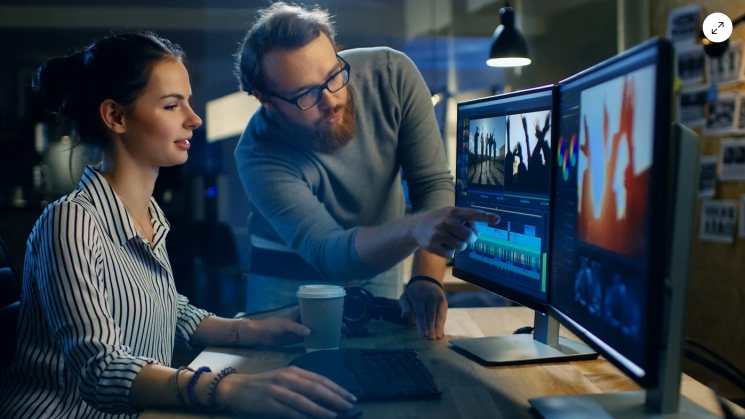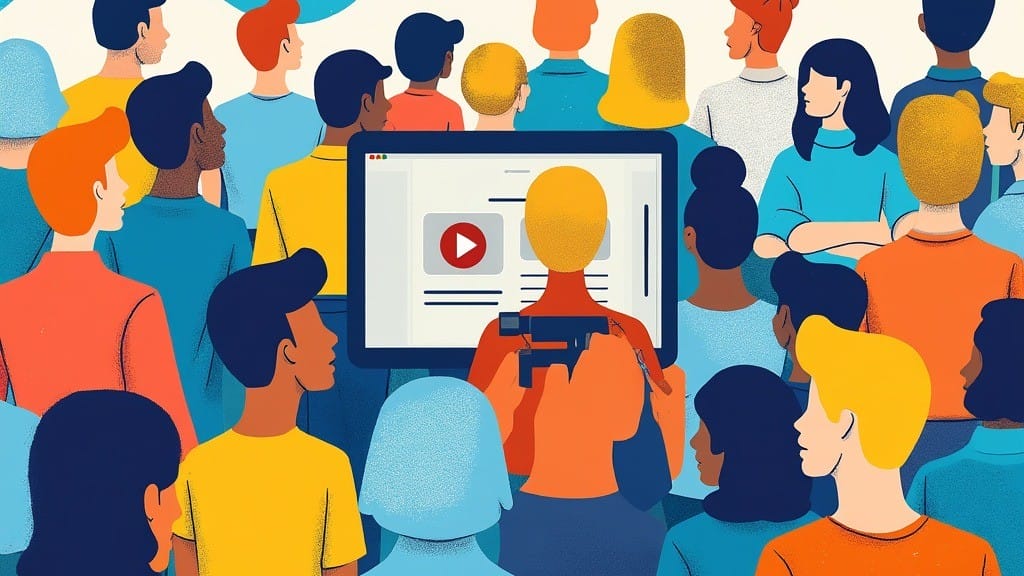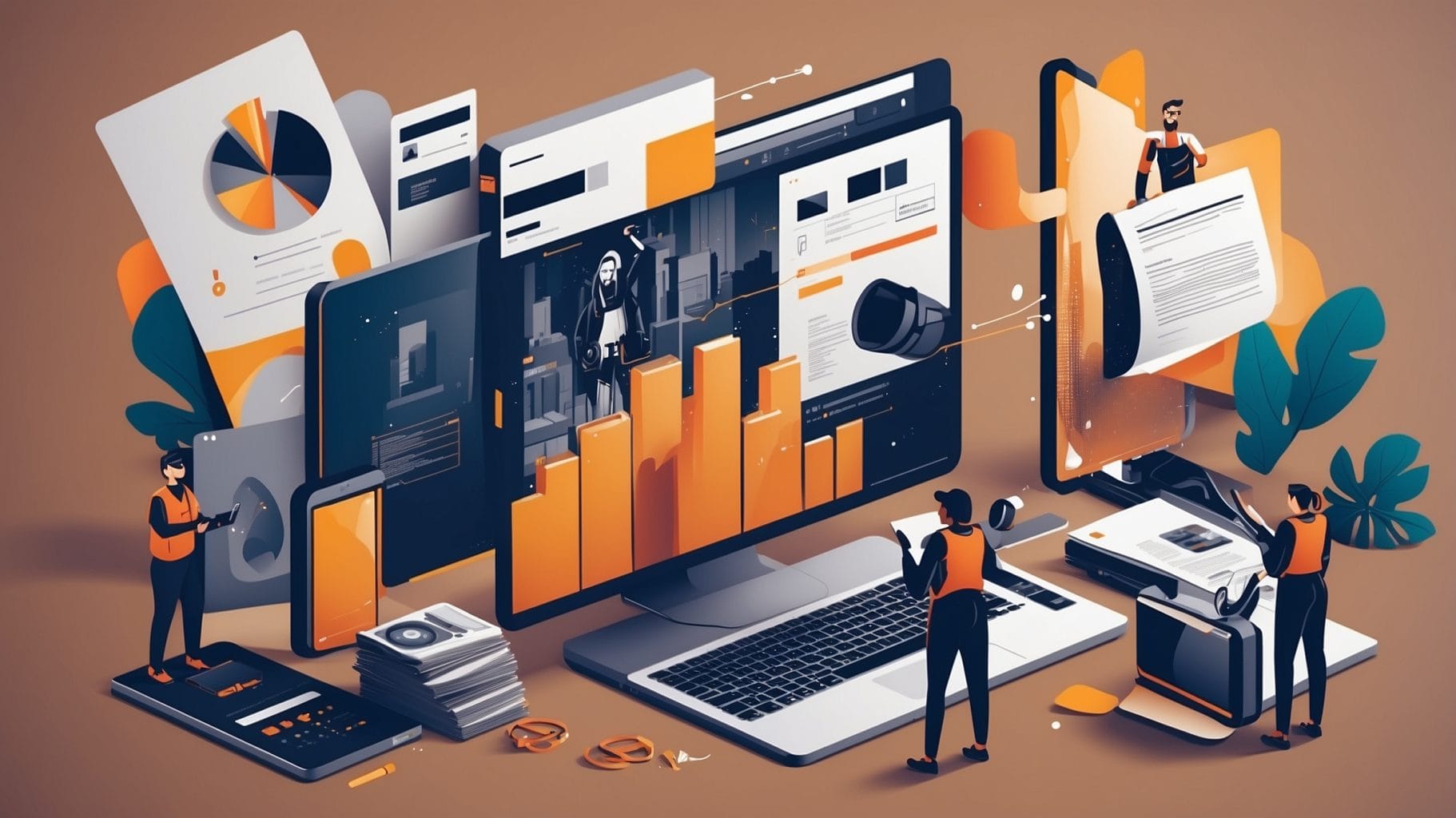Video content has become a powerful tool to engage employees, convey messages, and foster a unified corporate culture. As AI technology continues to advance, it offers new ways to enhance the creation and delivery of video content. For experienced professionals looking to incorporate AI into their internal communications video strategy, this deep dive will provide practical insights and actionable advice on how to leverage AI effectively.
1. AI for Idea Generation: Crafting Creative Concepts
Generating new ideas is a cornerstone of any successful video strategy, especially when it comes to keeping internal communications fresh and engaging. AI can be a valuable partner in the brainstorming process, offering a wide range of suggestions and creative directions. By mastering the art of prompting, you can extract the best ideas from AI.
Mastering Prompts: AI is only as good as the prompts you provide. Crafting detailed prompts that outline your goals can lead to more targeted results. For example, if you need a concept for a video that introduces a new HR policy, providing context about the company culture and the tone you’re aiming for can help AI suggest more relevant ideas.
Experiment with Constraints: Challenge AI by setting specific constraints or themes. For instance, ask it to generate ideas for a video that uses humour to address a serious topic or one that explains a complex concept using a storytelling approach. This can inspire ideas that might not have emerged through traditional brainstorming.
2. AI-Driven Style & Storyboarding: Aligning Creative Vision
Style frames and storyboards play a critical role in aligning the creative vision before production begins. They help ensure that everyone involved in the project understands the visual and narrative direction of the video. AI tools like DALL·E and MidJourney can significantly streamline this process by generating style frames and storyboards based on descriptive prompts.
Visual Consistency: By using AI-generated visuals, you can create a cohesive style that aligns with your brand identity. This is particularly useful when your video strategy involves a series of related videos or if you are maintaining a consistent tone throughout multiple campaigns.
Collaboration Enhancement: AI-generated storyboards can serve as a starting point for discussions with your team. Sharing these visuals can ensure that everyone is on the same page regarding the look and feel of the video, reducing the chances of misunderstandings during production.
3. Scriptwriting & Dialogue Generation: Crafting the Right Message
The script is the heart of any video, shaping the message and setting the tone. For internal communications, the script must strike a balance between being informative and engaging. AI can play a pivotal role in both drafting new scripts and refining existing ones.
Drafting Scripts with AI: AI tools like ChatGPT can help draft scripts based on your input. For example, you can provide a brief summary of the message you want to convey, and AI can generate a detailed script. This can save time, especially in the early stages of scriptwriting.
Improving Dialogue: AI can suggest alternative dialogue options, adjust the tone to match your target audience, and ensure that the message is clear and engaging. For instance, if your video is meant to explain a new company policy, AI can help rewrite the script in a way that makes the policy easier to understand and more relatable for employees.
Scenario-Based Storylines: With the right prompts, AI can generate multiple storylines or scenarios, allowing you to choose the one that best fits your communication goals. This is particularly useful for role-playing videos or training simulations, where different scenarios can help illustrate various aspects of a topic.
4. Music & Sound Effects: Creating the Right Atmosphere
Sound is a powerful element in video production, as it can greatly influence the mood and engagement level of the audience. AI platforms like AIVA and Soundraw offer tools to generate custom music and sound effects tailored to your video content.
Background Scores: AI can create background music that aligns with the tone of your message, whether it’s an upbeat track for a motivational video or a calming soundscape for a wellness initiative. Unlike traditional stock music, AI-generated tracks can be tailored specifically to match the rhythm and pacing of your video.
Sound Effects for Engagement: Custom sound effects can help emphasize key points or transitions in your video. For instance, a subtle sound cue can highlight important information in an explainer video or add a touch of humor in a more light-hearted piece of content. AI tools can generate these effects without the need for expensive audio libraries.
Copyright-Free Audio: One of the major advantages of using AI for music and sound effects is the elimination of copyright concerns. AI-generated music is typically royalty-free, meaning you can use it across multiple videos without worrying about licensing fees.
5. Personalization & Automation: Tailoring Content for Diverse Audiences
Internal communication videos often need to address a wide range of employees, from different departments, roles, and locations. AI can be instrumental in personalizing video content to ensure it resonates with diverse groups within the organization.
Automated Video Variants: With AI, you can create multiple versions of a video that speak directly to specific teams or regions. For example, AI can help adjust the tone or language of a video script to better suit different cultural contexts or translate key messages into multiple languages, making the content more inclusive.
Dynamic Content: AI can be used to add dynamic content to videos, such as personalized greetings or department-specific updates. This makes employees feel that the content is tailored specifically for them, enhancing engagement and making the communication more effective.
Data-Driven Insights: By analyzing data from previous video campaigns, AI can provide insights into what types of content resonate most with your audience. This can help refine future videos to better align with employee preferences, ensuring that your internal communication strategy evolves with the needs of your team.
6. AI-Powered Editing: Speeding Up Post-Production
Post-production can be a time-consuming part of the video creation process, especially when it involves fine-tuning elements like transitions, color grading, and sound synchronization. AI tools can accelerate these tasks, freeing up time for creative decision-making.
Automated Transcription & Subtitles: AI transcription tools can automatically generate accurate subtitles for your videos, which is especially useful for accessibility and reaching employees who may be in different time zones or prefer written communication.
Smart Editing Suggestions: Some AI-powered editing platforms can analyze your video content and suggest edits, such as cutting out filler words, adjusting pacing, or recommending scene transitions. This can be particularly helpful when editing lengthy internal meetings or town hall videos.
Consistency in Branding: AI can ensure that elements like logo placements, color schemes, and fonts remain consistent across all videos, maintaining a polished and professional look. This is crucial for reinforcing brand identity, even in internal communications.
Conclusion: Integrating AI into Your Video Strategy for Better Results
Incorporating AI into your internal communications video strategy is not just about automating tasks—it’s about enhancing creativity, improving efficiency, and delivering more tailored content to your audience. By leveraging AI for idea generation, storyboarding, scriptwriting, audio creation, personalisation, and editing, experienced professionals can produce engaging and effective videos that align with their organisation’s goals.
As AI technology continues to evolve, so do the opportunities for creating impactful video content. By staying informed about the latest AI tools and mastering their application, you can ensure that your internal communication videos remain relevant, engaging, and effective in the ever-changing workplace.





